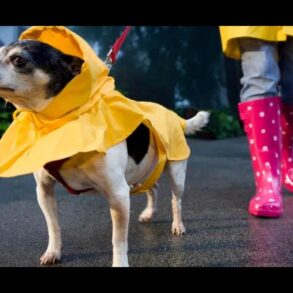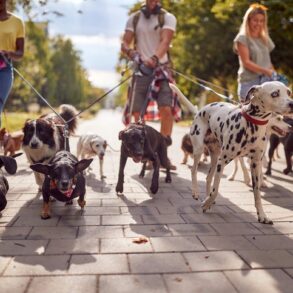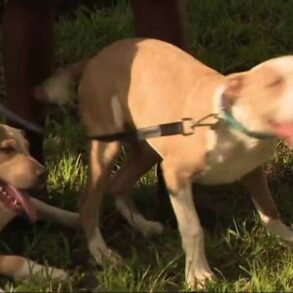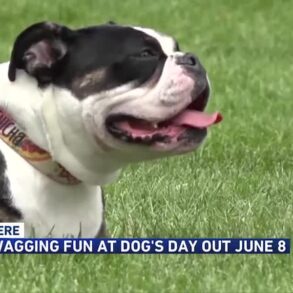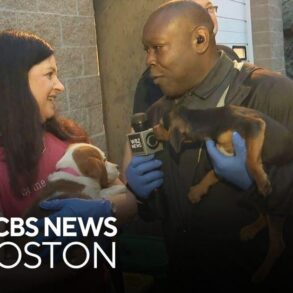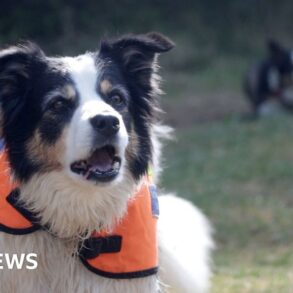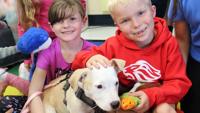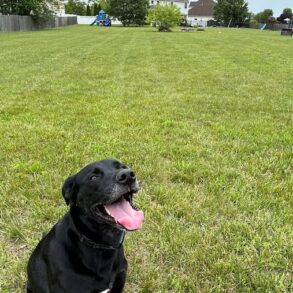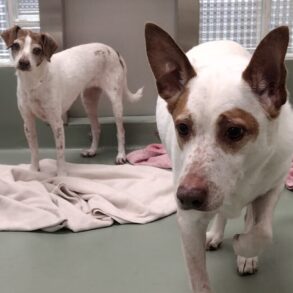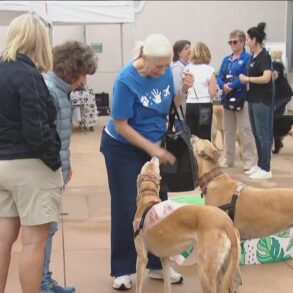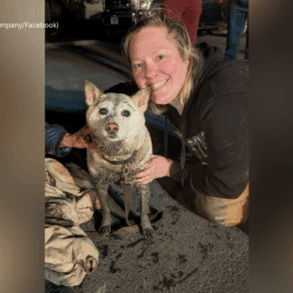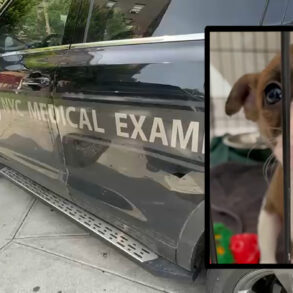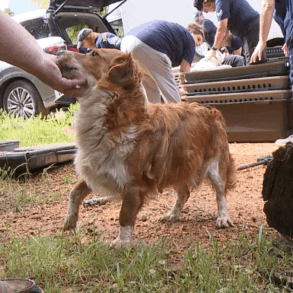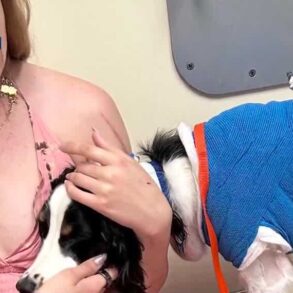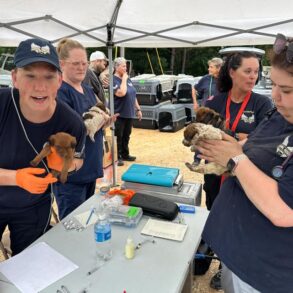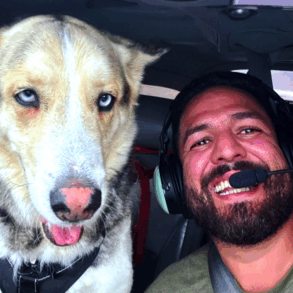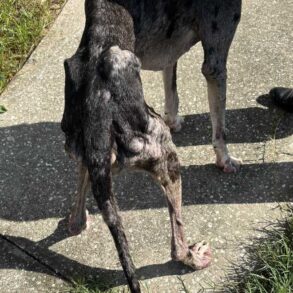Let’s get this one thing straight: Doggos don’t speak English, but the good news is that they’re better at reading humans than humans are at reading dogs.
Although it was once believed that dogs perceive human language differently than humans do, a fascinating study has found otherwise. When dogs were taught words for specific toys and then presented with either the correct or incorrect toy, non-invasive EEG recordings showed distinct brain activity patterns in response.
This tells us that dogs can differentiate between matching and mismatched words and objects, which is similar to what researchers have observed in humans and is widely accepted as evidence that they understand words.
Interestingly, several canine geniuses have proven that dogs can learn enough words to make even a toddler’s vocabulary look modest.
Take Rico, for instance, a clever Border Collie who understood over 200 words, while Chaser, another Border Collie, knew an astounding 1,022 words. How amazing is that?
Related: Do Dogs Really Know When They Did Something Wrong? A Behavior Expert Answers
How Do Dogs Learn Words?
Dogs are capable of associating words with specific objects or behaviors. This process is known as “associative learning,” and it consists of the ability to pair words with objects or actions. This is why dogs come when they are called, sit down and shake paws with you when asked.
When a dog is asked to fetch an object, let’s say a sock, the cue word “fetch” has been linked with the motor behavior of picking up an item, while the word “sock” has been paired with the visual and olfactory characteristics of the specific object.
This ability is what makes guide dogs capable of learning the names of objects ranging from “telephone” to “streetlight” to “stairs.” But how do dogs learn words? What are the exact dynamics?
Advertisement
Advertisement
Something to consider is that not all dogs are capable of learning lots of words. Most dogs with this ability are Border Collies, but recently, a Yorkshire Terrier with a vocabulary of about 200 words was identified.
“It remains unclear what dynamic is behind some dogs being such successful word learners. Most dogs, even when exposed to extensive training, are unable to learn much more than a dozen words,” points out senior researcher Susanne Grassmann.
Most likely, what’s happening is that dogs first learn by relying on a pointing gesture directed towards a specific object. Second, they figure things out through a process of elimination. These one-word-to-one-object connections show that dogs have a basic understanding of words.
Did You Know?
According to a study, a dog’s ability to understand human words is roughly equivalent to that of a 12-to-18-month-old human baby.
What Surprising Words Do Dogs Understand?
Everybody knows that dogs understand a variety of words commonly used during training. Verbal cues such as “sit,” “come,” “down,” “stay,” “wait,” “no,” “OK” and “leave it” are often part of a dog’s repertoire of learned behaviors. Most of all, dogs are known for responding to their names.
While verbal cues make up the majority of words to which dogs reportedly respond, there are several other words they respond to as well.
1. “Later” or “Not Now”
If your dog is seeking attention from you while you’re on the phone or grabbing the ball and running towards you in hopes of you tossing it, you may at some point say the words “later” or “not now.”
No word triggers an eye-roll quite like the word “later.” Dogs know that you’re using it to delay fun, affection or food, and they seem to get it if you totally withdraw and stick to your plan of no longer interacting.
While dogs don’t understand abstract time, they understand postponement. Therefore, the word “later” simply tells them that nothing good is happening now. After some time, dogs may learn to walk away with a look of resignation on their face.
2. “That’s Enough”
Your dog is leaning on you like the Tower of Pisa while you’re watching TV and petting him. After a few gentle pats, you decide that he has had enough for the evening, and now you’d like to lie down on the couch and focus on your favorite show.
So you stop petting and say “that’s enough,” accompanied by a hand signal. If you stick to your plan, your dog will understand and walk away or lie down in his usual spot.
3. “Where’s Grandma?” (or Any Favorite Human’s Name)
Dogs can learn rather quickly to associate a name with a specific person. If your spouse’s name is Robert, you can say “where’s Robert?” when he’s nearby. If the dog looks at Robert or moves toward him, he can reward the dog with a treat.
After several repetitions, Robert can stay further away, and the same exercise can be repeated. Once the dog makes the connection, it’s possible to add further distance and even morph this into a game of hide-and-seek.
Robert can start by hiding in easy-to-find places, then gradually progress to more difficult hiding spots and maybe even completely out of sight.
Related: 7 Weird Things Dogs Do Around Their Pet Parents—and Why
4. “Walk”
Whether whispered or spelled out, this word still breaks the sound barrier. Most dogs will cock their heads when they hear their owners say, “Rover, wanna go on a walk?”
If you reliably say the word “walk” when you perform any behavior associated with going out the door, your dog will likely learn the meaning of this word, as it’s a classically conditioned trigger.
5. “Oops” or “Uh-oh”
No one teaches dogs that the words “oops” or “uh-oh” signal that some type of food just fell, but they can figure it out faster than most toddlers. The moment you happen to drop a crumb, they’re right at it.
If you say “oops” or “uh-oh,” your dog will be quick to associate those words with the food, leading to what’s known as a secondary reinforcer.
6. “Car” or “Ride”
Depending on the dog, the words “car” or “ride” can either signal a head out of the window enjoying fur in the breeze, or a trip to the vet. Either way, the words are rich in meaning, and many dogs react to them accordingly.
While many dogs enjoy car rides and react with happy anticipation, those who dislike them will try to engage in some type of avoidance behavior.
The ultimate value of the word, therefore, depends entirely on your dog’s prior experiences being in the car. If your dog dreads going to the vet, make sure to mix in some trips to the pet store or dog park to maintain the “fun” end of the spectrum.
7. “Bedtime”
If you say “time to go night-night” or “time to go to bed” every evening before going to bed, your dog will learn to associate those words with the action of walking towards the bedroom or dimming lights, brushing teeth or a final potty trip. Dogs thrive on predictability and routines, and therefore, “bedtime” cues are like clockwork to them.

Do Dogs Understand the Word “Sorry”?
When accidentally stepping on our dog’s tail or paw, many of us instinctively react by saying, “Oh, I’m so sorry.” But do dogs really understand the word “sorry”? It would be interesting to know, but it looks like no official studies have been conducted on this.
There may be a chance that dogs grasp our good intentions. When I stepped on my dog’s paws in the past and said, “Oh my gosh, I am so sorry!” I would usually get some type of response that made me feel as if my dog recognized the apology and accepted it (licking me, wagging the tail).
However, we may never know if it’s a true understanding or simply a response to our body language and tone of voice.
Words as Predictive Signs
As we’ve seen, dogs don’t need full sentences to get the gist. They’re constantly checking our tone, body language and words, even when we’re not actively teaching them. Words, therefore, transform into emotional markers, predictive signals and cues for action.
Up Next:
Related: 10 Strange Things Dogs Can See and Hear That Humans Cannot
References
-
Marianna Boros, Lilla Magyari, Boglárka Morvai, Raúl Hernández-Pérez, Shany Dror, Attila Andics. Neural evidence for referential understanding of object words in dogs. Current Biology, 2024
-
Bloom, Paul. (2004). Behavior. Can a dog learn a word?. Science (New York, N.Y.)
7 Words Dogs Can Actually Understand—And They’re Not What You Think first appeared on Parade Pets on May 27, 2025
This post was originally published on this site be sure to check out more of their content.



